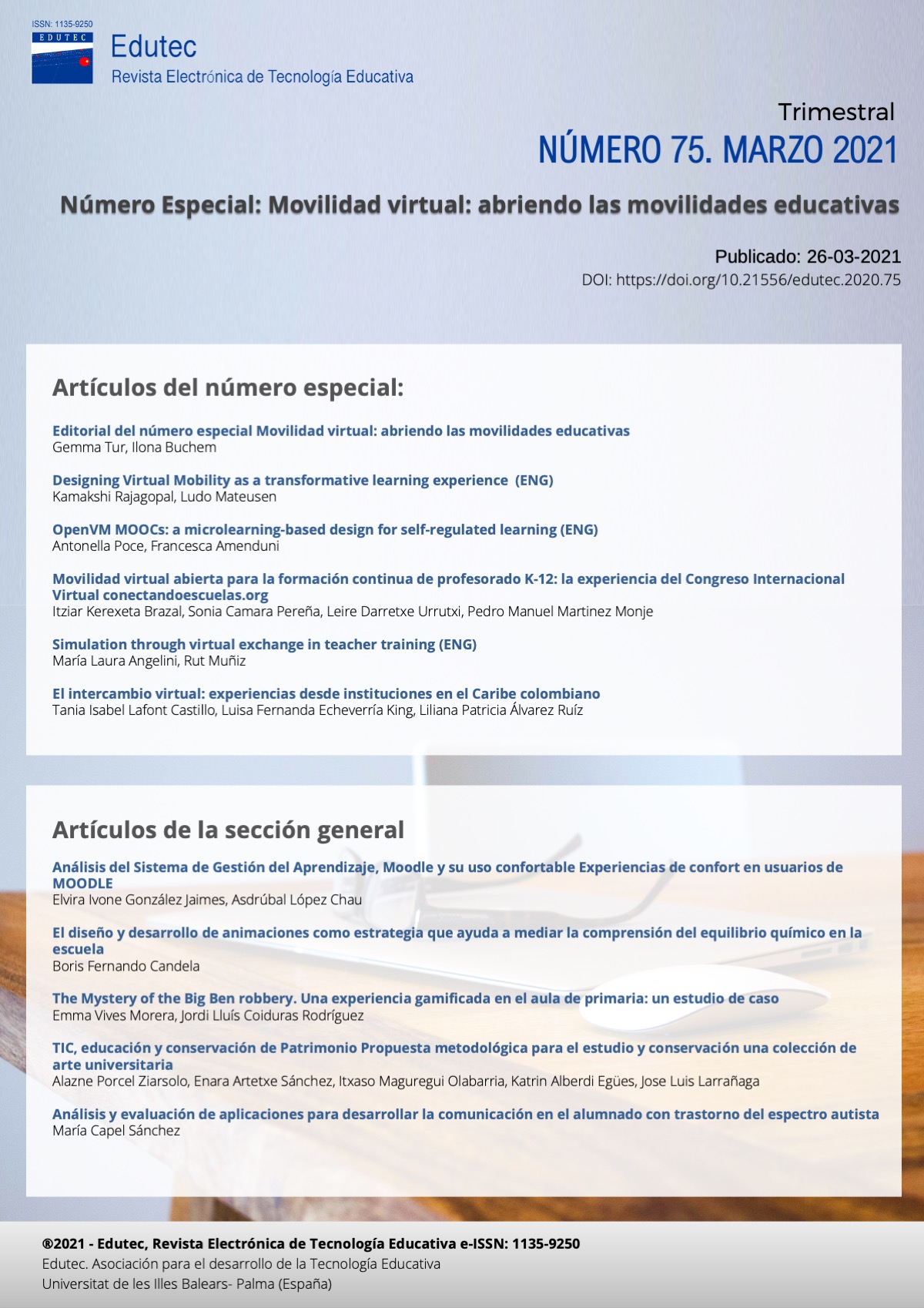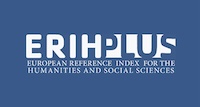The design and development of animations as a strategy that helps mediate the understanding of chemical equilibrium in school
DOI:
https://doi.org/10.21556/edutec.2021.75.1787Keywords:
animations, visualization, Stop motion, chemestry education, chemical balanceAbstract
The purpose of this study is to investigate whether the design and development of animations mediated by the Stop Motion technique, help students to build an understanding of chemical balance at the molecular level. The methodology was qualitative by case study, and the data was collected through documentary sources such as: class videos, non-participant observation, student work, and interviews. The analysis of the data generated the following categories: (1) The design of animations in conjunction with a sociocultural and phenomenological teaching orientation, a key factor in the differentiation and integration of the levels of representation of chemistry; (2) The evaluating pair of animations is a key element in the construction of chemical equilibrium compression; (3) Animations cognitive tool that supports the visualization, interpretation and reasoning of chemical processes; and (4) The design of animations is an important factor in the development of thinking skills demanded by the knowledge society. These results allowed us to conclude that the design and development of animations through the Stop Motion technique within a sociocultural perspective teaching context, helped to mediate the understanding of chemical balance.
Downloads
References
Candela, B. F., & Viáfara, R. (2014). Aprendiendo a enseñar química. Programa Editorial UNIVALLE.
Candela, B. F. (2018). El lenguaje y las múltiples representaciones externas. Estrategias de pensamiento en el aprendizaje de las ciencias. Programa Editorial UNIVALLE.
Chan, M. S., & Black, J. B. (2005). When can animation improve learning? Some implications for human computer interaction and learning. Proceedings of the World Conference on Educational Multimedia, Hypermedia and Telecommunications 2005 (pp. 2581–2588). Norfolk, VA.
Chang, H.-Y. & Quintana, C. (2006). Student-generated animations: Supporting middle school studentsí visualization, interpretation and reasoning of chemical phenomena. In Proceedings of the 7th International Conference of the Learning Sciences (pp. 71 ñ 77). International Society of the Learning Sciences, Bloomington, IN.
Chang, H.-Y., Quintana, C., & Krajcik, J. S. (2010). The impact of designing and evaluating molecular animations on how well middle school students understand the particulate nature of matter. Science Education, 94, 73–94
Chin, M. & Wu, H. (2009). The roles of multimedia in the teaching and learning of the triplet relationship in chemistry. In J. K. Gilbert & D. Treagust (Eds.), Multiple representations in chemical education (pp. 251–283). Dordrecht, The Netherlands: Springer.
Hoban, G. & Nielsen, W. (2010). The 5 Rs: A new teaching approach to encourage slowmations (student-generated animations) of science concepts. Teaching Science: Australian Science Teachers Journal, 56(3), 33–37.
Hoban, G., Loughran, J. & Nielsen, W. (2011). Slowmation: preservice elementary teachers representing science knowledge through creating multimodal digital animations. Journal of Research in Science Teaching, 48(9), 985-1009.
Hubscher-Younger, T., & Narayanan, N. H. (2003). Dancing hamsters and marble statues: characterizing student visualizations of algorithms. Paper presented at the 2003 ACM symposium on Software visualization., San Diego, CA.
Kozma, R. (2000). Representation and language: The case for representational competence in the chemistry curriculum. Ponencia presentada en la Biennial Conference on Chemical Education. Ann Arbor, MI.
Miles, M. B., Huberman, A. M. & Saldaña, J. (2013). Qualitative data analysis: a methods sourcebook. SAGE Publications, Inc. US.
Salomon, G., Perkins, D.N. & Globerson, T. (1991). Partners in cognition: extending human intelligence with intelligent technologies. Educational researcher, 20(3): 2-9.
Schank, P., & Kozma, R. B. (2002). Learning chemistry though the use of a representation-based knowledge building environment. Journal of Computers in Mathematics and Science Teaching, 21(3), 253-279.
Vermaat, H., Kramers-Pals, H., & Schank, P. (2003). The use of animations in chemical education. In Proceedings of the International Convention of the Association for Educational Communications and Technology (pp. 430-441). Anaheim, CA.
Weiss, R. E., Knowlton, D. S., & Morrison, G. R. (2002). Principles for using animation in computer-based instruction: theoretical heuristics for effective design. Computers in Human Behavior, 18, 465-477.
Yin, R.K. (2003). Investigación sobre estudio de casos. Diseño y Métodos. Thousand Oaks, California: Sage Publications.
Downloads
Published
How to Cite
Issue
Section
License
By submitting the paper, the authors assign the publication rights to the journal Edutec. For its part, Edutec authorises its distribution as long as its content is not altered and its origin is indicated. At the end of each article published in Edutec, the citation procedure is indicated.
The management and editorial board of Edutec Revista Electrónica de Tecnología Educativa do not accept any responsibility for the statements and ideas expressed by the authors in their work.
Translated with www.DeepL.com/Translator (free version)









